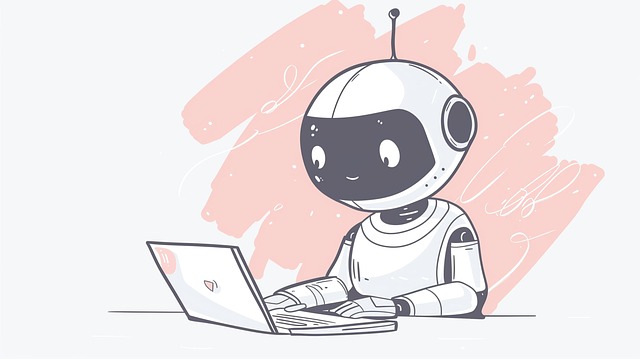Creating an AI chatbot (ochatbot) requires understanding AI and NLP. The process involves structuring conversation flows, crafting response templates, and integrating knowledge bases. Developers use programming languages and tools to build scripts, combining logic, conditional statements, and machine learning. Define the chatbot's purpose, choose a platform like Dialogflow or IBM Watson Assistant, design conversation flows, train with data, test, and integrate into channels for seamless interaction. Target keywords: AI chatbot, AI chatbots, ochatbot.
“Unleash your creativity and embark on the journey of crafting your own AI companion! This comprehensive guide delves into the world of AI chatbot scripting, transforming your ideas into an engaging conversational AI.
In this article, we’ll explore the fundamentals of AI chatbot development, providing a step-by-step blueprint for building an ‘ochatbot’ that understands and responds to user queries naturally. From understanding the basics to executing your vision, get ready to revolutionize the way you interact with technology.”
Understanding AI Chatbot Scripting: The Basics

Creating a scripted AI chatbot involves understanding the fundamentals of artificial intelligence and natural language processing (NLP). At its core, an AI chatbot is designed to simulate human-like conversations by processing user inputs and generating relevant responses. This process is achieved through scripting, which allows developers to define how the chatbot interacts with users.
Scripting for AI chatbots includes designing conversation flows, crafting response templates, and integrating knowledge bases or data sets to provide accurate information. Developers use programming languages and tools specifically tailored for chatbot development to bring these scripts to life. By combining logical structures, conditional statements, and machine learning algorithms, developers can create ochatbots that learn from user interactions, adapt their responses, and enhance the overall conversational experience.
Building Your Own oChatbot: Step-by-Step Guide

Creating your own AI chatbot, or oChatbot, is a rewarding process that demystifies advanced technology. Here’s a step-by-step guide to get you started:
1. Define Your Chatbot’s Purpose: Before coding, envision your oChatbot’s role. Is it designed for customer service, entertainment, or information retrieval? This will shape its conversational abilities and data requirements.
2. Choose Your Development Platform: Select a platform tailored to AI chatbot development, like Dialogflow (Google), IBM Watson Assistant, or Microsoft Bot Framework. These platforms offer pre-built features, natural language processing capabilities, and integrations for seamless chatbot creation.
3. Design the Conversation Flow: Map out the conversation structure using a flowchart or visual editor provided by your chosen platform. Define user inputs, intents, entities, and corresponding responses to guide the chatbot’s understanding and reaction.
4. Train and Test Your Chatbot: Feed your oChatbot with relevant data to train its machine learning models. Test it thoroughly across various scenarios, refining responses and improving accuracy as needed. This iterative process ensures your AI chatbot delivers reliable, contextually appropriate interactions.
5. Integrate and Deploy: Once satisfied with performance, integrate your trained chatbot into desired channels like websites, messaging platforms, or social media. Deployment allows users to interact with your oChatbot seamlessly, enhancing customer experiences or streamlining tasks.
Creating your own scripted AI chatbot is an exciting journey into the future of communication technology. By understanding the fundamentals and following a structured guide, you can bring your ideas to life and develop intelligent conversational agents. With each interaction, your oChatbot evolves, learning from user inputs to provide more accurate and engaging responses. Embracing this process paves the way for innovative applications of AI chatbots, revolutionizing how we interact with machines in our daily lives.
